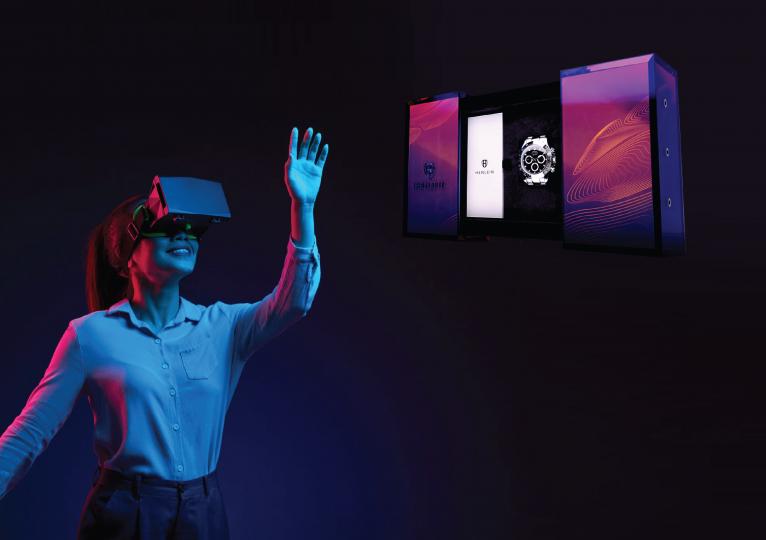Package Design
The VR (Very Real) Benefit of VR in Packaging
Published
4 years agoon
By
BXP Reader
The VR (Very Real) Benefits of VR in Packaging
For years, Virtual Reality (VR) struggled to achieve widespread consumer adoption. Now, however, as we ‘relook our own realities’ and the seismic changes reshaping every aspect of society, so new opportunities for VR to deliver a transformative impact in the packaging realm appear even more exciting.
But what is VR really and how can, and will, it impact packaging?
In simple terms, Virtual Reality makes use of technology to create interactive virtual experiences (typically viewed through a headset). Users are ‘placed inside’ a simulated world that provides a far greater sense of immersion and engagement than what can typically be experienced through traditional flat screens.
“Whilst Virtual Reality has existed in some form or another for decades,” says LB Odendaal, Head of Design at IPL Packaging, “until relatively recently, it’s proven either extremely expensive or of poor quality. Now, however, thanks to a proliferation of high-resolution and inexpensive screens developed for smartphones and tablets, along with vast improvements in computer graphics cards, VR is becoming increasingly more advanced and accessible,” he states.
“As a technology it also offers a unique way to interact with digital content that can ultimately redefine and enliven the packaging design process. And, looking towards a future with less travel and ‘face time’, VR offers potential for a powerful and lifelike alternative to true physical interaction!”
AdvertisementA vision of the future
“Leveraging virtual and augmented reality for proofing and visualization of packaging offers some of the same benefits of a physical prototype, but in a more immediate digital format,” explains Odendaal. “When clients are able to see a concept in 3D, instead of an abstract dieline, the product and accompanying package become a ‘vision of the future’ instead of a 2D spatial intelligence test.”
“As part of IPL’s ongoing investigations into this area, one of our first steps was to look to create a ‘virtual showroom’ that would allow clients to interact with our packaging concepts and incorporate the 3D reality component that helps bring our packaging designs and our clients’ brands to life,” he says. “The interactive environment we created allowed them to visualise the packaging solutions at proper scale and, ultimately, in whatever intended environment they chose.”
Reduced investment, increased enrichment.
“In the future we imagine that, with VR integration, our design team will be able to go beyond product mockup and deliver an accurate representation of how the product will look in a particular environment,” states Odendaal. “And, when you place a product in a VR environment, you can also see whether, for example, the chosen colors make the package ‘pop’ on the shelf or merely blend into the surrounding competition. Clients can then also easily request changes – like color and shape – without running up additional material costs.”
“In this way, VR will simplify the packaging value chain, making designers’ and clients’ jobs easier – and saving time and money. It will also allow designers to show clients virtual mockups early in the process to get feedback when it’s most useful and least costly to incorporate,” he says.
AdvertisementAnd as for Sustainability?
“With VR you’re saving on printing, materials, labour and transport – and ultimately reducing your carbon footprint,” explains Odendaal. “Based on consumer testing and feedback through VR interaction, designers can then adapt product packaging quickly to improve the quality and relevance of the final product at launch.
“At IPL we see the future of packaging design moving away from 2D screens and tablets and ultimately becoming fully immersive. With the help of virtual environments and a host of immersive three-dimensional concepts we’re currently testing, we hope to soon be standing around a virtual table with our teammates in offices around the world, drawing and engineering in 3D and making decisions on production and tooling as changes are made to 3D models in real time!” he states.
“We’re excited to be getting involved in VR development early in a way that we hope to increase our agility, efficiency and turnaround times even further. It is true we are still at relatively early stages but it’s an exciting and important time to be engaging and developing the virtual world,” says Odendaal.
Advertisement
Editorial Note: This post was shared by a member of the BXP magazine community using our Community Voice tool.
Our website community uses the tool to post articles, thought-leadership reports and analyses, white papers, case studies, blog entries and op-eds, press releases and events about brand and package design or marketing. These posts are vetted and edited by our editorial staff for editorial relevance and decorum for branding, design, marketing and package design professionals. Approved and edited content then lives side-by-side with other editorial content. Overtly promotional content is not accepted, but we do have advertising options available for those interested in promoting their services or products.
Do you want to become a contributing author to the BXP website? Click here to learn how you can become a contributing member of the BXP Magazine community.

SPONSORED VIDEO
Branding with Ferocity – Thinking Like an Indie Brand
Get a better understanding on how to leverage new technologies to engage and delight shoppers, sustainability’s role in product and package design – being sustainable and premium are not mutually exclusive, plus best practices and tips for collaboration and how to launch new products and refresh existing product line-ups and brands.
You may like
Advertisement
Subscribe

BULLETINS
Get the most important news and business
ideas from BXP Magazine's news bulletin.
Advertisement







